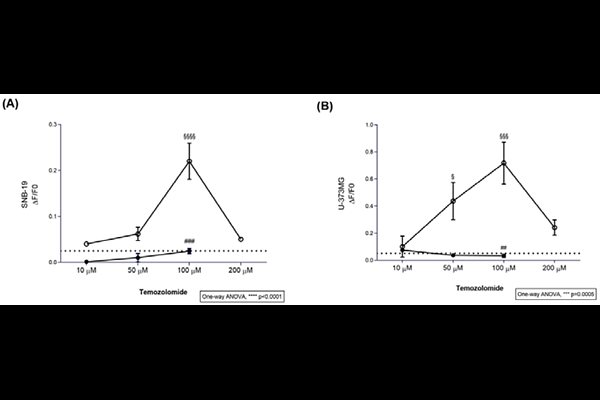Glioblastoma cells taste temozolomide via TAS2R43

Glioblastoma cells taste temozolomide via TAS2R43
Costa, A. R.; Duarte, A. C.; Goncalves, I.; Preissner, R.; Cascalheira, J. F.; Marcelino, H.; Santos, C. R. A.
AbstractBitter taste receptors (TAS2Rs) have a widespread expression in various extraoral organs where they detect the chemical composition of body fluids and trigger biological responses accordingly. Among the chemicals recognised by TAS2Rs there are natural and synthetic compounds including therapeutic drugs. We have shown that TAS2Rs are expressed in the blood-cerebrospinal fluid barrier where they regulate efflux transporters, thereby controlling the transport of compounds into the cerebrospinal fluid. More recently, we assessed the expression of these receptors in human glioblastoma cells, where 20 out of the 26 human TAS2Rs were identified. In this study, we investigated if temozolomide, the standard chemotherapy for glioblastoma, activates the bitter signalling pathway with impact in its therapeutic efficacy. Notably, we found that blocking the bitter taste signalling pathway significantly reduced the anti-proliferative and pro-apoptotic effects of temozolomide, and identified TAS2R43 as the receptor mediating these effects. We propose that upon ligand binding, TAS2R43 modulates multidrug resistance proteins (MDRs) activity, facilitating temozolomide entrance into glioblastoma cells. These findings underscore the importance of the taste transduction pathway in evaluating the chemical composition of the glioblastoma microenvironment. Furthermore, our data suggest that TAS2R43 could serve as a biomarker for the efficacy of temozolomide and other drugs that are substrates of MDRs.